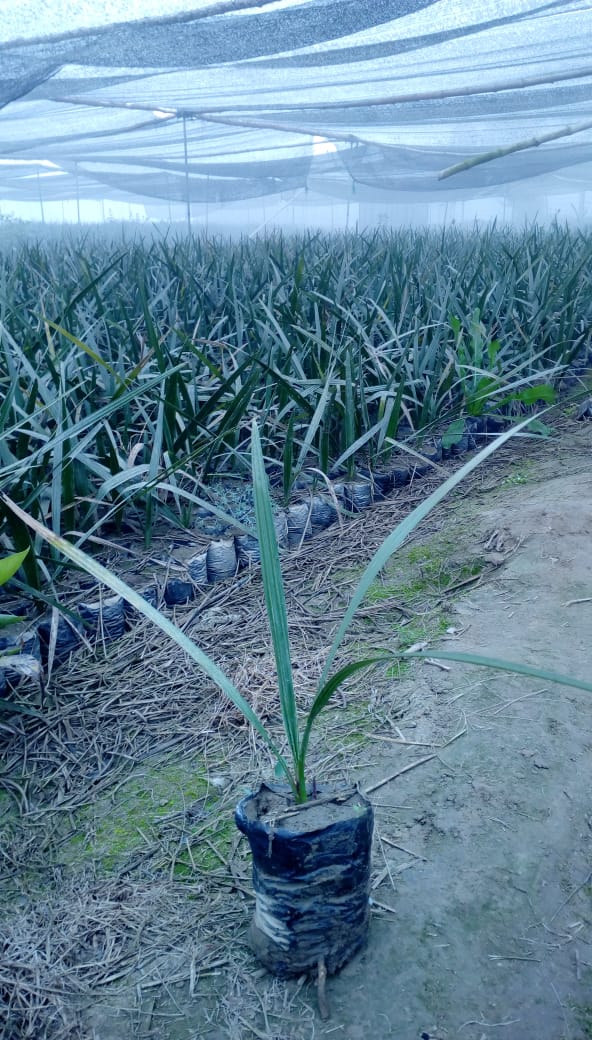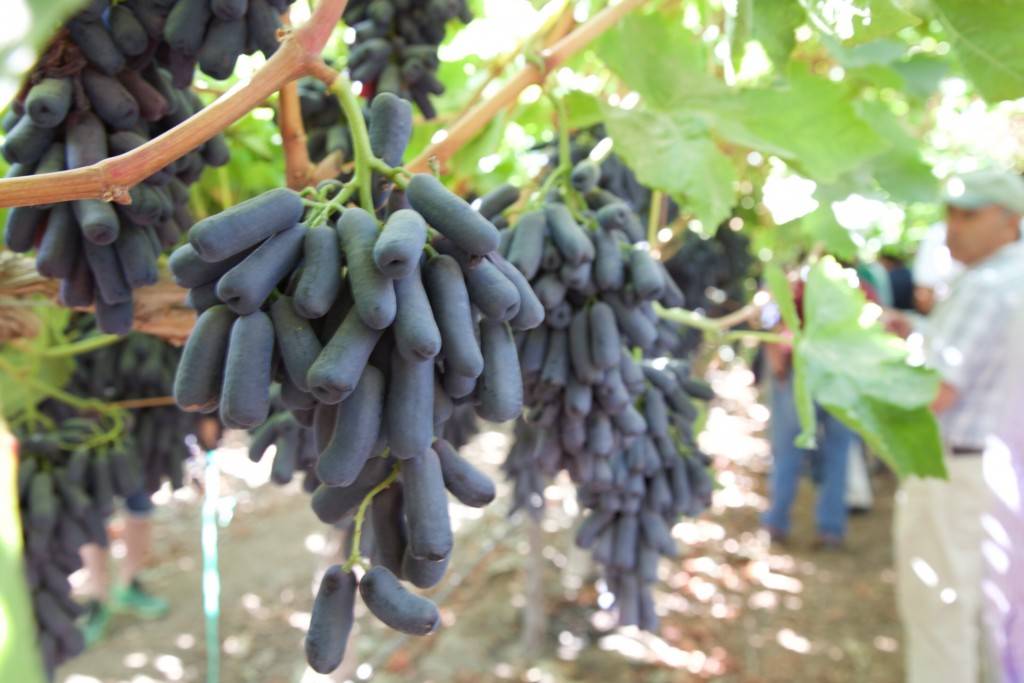Copernicia Palm Seedlings in Pakistan

Copernicia Palm Seedlings in Pakistan
Welcome to the enchanting world of Copernicia palm, a species that exudes tropical charm and sophistication. In this comprehensive guide, we’ll delve into the realm of Copernicia palm seedlings, exploring their unique characteristics and unraveling the secrets to nurturing these botanical gems from their humble beginnings to majestic maturity.
Unveiling Copernicia Palm Seedlings in Pakistan:
Copernicia palms, celebrated for their captivating fronds and graceful trunks, embark on their journey in Pakistan as delicate seedlings. In this exploration, we unveil the distinctive features that distinguish Copernicia palm seedlings, from their initial size to the unique characteristics that foretell the magnificence they are destined to achieve. Let’s delve into the significance of Copernicia palms in the landscaping scene of Pakistan and understand the crucial role their seedlings play in this tropical journey.
Distinctive Features of Copernicia Palm Seedlings: The journey of Copernicia palms in Pakistan commences with seedlings that bear unique attributes. These young palms exhibit an initial size that reflects their tender beginnings, and as they grow, they reveal characteristics such as slender fronds and a graceful trunk that hint at the majestic beauty they will mature into. The distinctive features of Copernicia palm seedlings contribute to their allure and set them apart in the rich tapestry of Pakistan’s botanical landscape.
Foreshadowing Grandeur: As Copernicia palm seedlings unfold and develop, they provide a preview of the grandeur that awaits them in maturity. The elegance encapsulated in their slender trunks and the intricate patterns of their fronds foreshadow the tropical splendor these palms will bring to the landscape. Understanding this progression is key to appreciating the transformative nature of Copernicia palms as they evolve from delicate seedlings into towering botanical wonders.
Significance in Landscaping: Copernicia palms hold immense significance in the landscaping realm of Pakistan. Their striking fronds and slender trunks contribute to the creation of lush, tropical aesthetics that complement the diverse natural beauty of the country. These palms add a touch of sophistication to gardens, parks, and urban green spaces, enhancing the overall visual appeal with their unique tropical charm.
Pivotal Role of Seedlings: Within the tropical journey of Copernicia palms, the seedlings play a pivotal role. They represent the starting point of a botanical legacy, symbolizing the promise and potential encapsulated in every delicate frond. The careful cultivation and nurturing of these seedlings set the foundation for the grandeur that will unfold in the landscape, making them essential protagonists in the story of Copernicia palms in Pakistan.
Planting Essentials for Copernicia Palm Seedlings:
Embark on the exciting journey of cultivating Copernicia palm seedlings by mastering the essential elements of planting. Successfully establishing these young palms requires a thoughtful approach to their unique needs, encompassing optimal soil conditions, proper drainage, and ideal sunlight exposure. Let’s dive into the intricacies of planting, ensuring that every aspect contributes to the creation of a robust foundation for the healthy growth of Copernicia palm seedlings.
Optimal Soil Composition: One of the primary considerations in planting Copernicia palm seedlings is the soil composition. These palms thrive in well-draining soils with a slightly acidic to neutral pH range. Prepare a mix that combines organic matter, such as compost or well-rotted manure, with a loamy or sandy soil. This composition ensures adequate drainage, preventing waterlogging that can be detrimental to the developing roots of the seedlings.
Drainage Requirements: Copernicia palm seedlings, like many palms, are sensitive to waterlogged conditions. Therefore, ensuring proper drainage is essential for their successful growth. Choose a planting site with well-drained soil, or amend the soil with materials like perlite or sand to enhance drainage. Raised planting beds can also be advantageous, preventing water from pooling around the roots and minimizing the risk of root rot.
Sunlight Preferences: Copernicia palms are sun-loving plants that thrive in full to partial sunlight. When selecting a planting location, prioritize areas that receive ample sunlight throughout the day. While they can tolerate some shade, providing them with abundant sunlight encourages robust growth and the development of their characteristic fronds. Ensure that the chosen site offers a good balance between sunlight exposure and protection from harsh afternoon rays.

Intricacies of Planting: Delve into the intricacies of planting Copernicia palm seedlings, ensuring each step contributes to their healthy establishment. Begin by digging a hole that is twice the width of the root ball but no deeper than the existing root system. Place the seedling in the center of the hole, ensuring that the root crown sits slightly above the soil surface. Backfill the hole with the prepared soil mixture, gently tamping it down to eliminate air pockets.
Proper Spacing and Depth: Consider proper spacing to avoid overcrowding as Copernicia palms mature. Provide enough room between seedlings to accommodate their eventual width, allowing for proper air circulation and preventing competition for resources. Ensure that each seedling is planted at the correct depth, maintaining the natural level of the root ball while ensuring it is secure in the soil. Proper spacing and depth contribute to the development of a robust and well-anchored foundation.
Overcoming Challenges in Copernicia Palm Cultivation:
Embarking on the cultivation journey of Copernicia palm seedlings is a rewarding endeavor, but like any botanical pursuit, it comes with its set of challenges. To ensure the health and vitality of your Copernicia palms, it’s crucial to proactively address potential issues that may arise. From pests and diseases to environmental stressors, gaining insights into identifying problems early on and implementing effective solutions is key to navigating potential hurdles successfully.
1. Pest Management: One common challenge in Copernicia palm cultivation is the potential infestation of pests. Keep a vigilant eye for pests such as scale insects, mites, or aphids that may affect the fronds or the trunk. Regularly inspect the undersides of leaves and the trunk for any signs of infestation. Should pests be identified, consider using insecticidal soaps or horticultural oils to control their population. Early intervention is crucial in preventing significant damage to your Copernicia palms.
2. Disease Prevention: Copernicia palms are generally hardy, but they can still be susceptible to certain diseases, particularly fungal infections. Ensure good air circulation around the palms by avoiding overcrowding and maintaining proper spacing. Additionally, refrain from overwatering, as excessive moisture can create a conducive environment for fungal growth. If symptoms of diseases such as leaf spot or root rot appear, promptly remove affected fronds and treat with appropriate fungicides following manufacturer recommendations.
3. Environmental Stressors: Environmental stressors, including extreme weather conditions, poor soil quality, or inadequate sunlight, can impact the health of Copernicia palm seedlings. Monitor weather forecasts and protect seedlings from severe weather events such as storms or frost. Regularly assess soil conditions, ensuring proper drainage and nutrient levels. Adjust watering practices to prevent both underwatering and overwatering, maintaining a balance that suits the specific needs of Copernicia palms. Adequate sunlight is crucial for their growth, so consider the placement of shade structures if intense sunlight becomes an issue.

4. Nutrient Deficiencies: Identifying and addressing nutrient deficiencies is essential for the overall health of Copernicia palms. Conduct regular soil tests to assess nutrient levels and adjust fertilization accordingly. Yellowing fronds may indicate nutrient deficiencies, with magnesium and potassium being common culprits. Applying a balanced palm fertilizer, including micronutrients, can help address nutritional imbalances and promote healthy growth.
5. Transplanting Challenges: If transplanting Copernicia palms becomes necessary, challenges may arise during the transition. Transplant shock can occur, leading to wilting or slowed growth. To mitigate this, carefully follow proper transplanting techniques, ensuring minimal disturbance to the root system and providing adequate water and support during the acclimation period.
In conclusion, cultivating Copernicia palm seedlings is a journey filled with fascination and rewards. By understanding their unique characteristics, mastering planting essentials, and nurturing their growth with care, you can transform these delicate seedlings into breathtaking tropical wonders. Whether you’re a seasoned gardener or a newcomer to the world of palms, the journey with Copernicia palm seedlings promises a touch of exotic elegance to your botanical endeavors. Happy gardening!
Keep Visiting Aziz Nursery Farm: Importer and Exporter of Ornamental Plants, Seeds and Seedlings
12 thoughts on “Copernicia Palm Seedlings in Pakistan”
Leave a Reply
You must be logged in to post a comment.

is plant ki kimat kya whole sale ka hisaab sa
60 rup
Mery pas 4000 plant hain is size k sale krny hain
Mujy contect kary agr ap kay pass thela may plams kay plants hay to …00971564723757
yes available
seedlings 60 rup. mature 7 year old local tree 30,000 rup. mature 7 year old impported tree 300,000 rup.
Baclofene Grenoble Sildenafil Tadalafil And Vardenafil Viagra Quando Scade Il Brevetto viagra Cephalexin Used To Treat Dogs
Purchasing Cialis In Canada buy zoloft cheap no rx Keflex And Holy Basil
Thyrox 200 Without A Prescription Cytotec Canada cheapest cialis Kamagra Gelee
اسلام علیکم کیا یہ ایک عدد بھی مل سکتا اور اس کی قیمت کیا ہوگی ہے
sapling. 30 rup. location pattoki. delievery service is not available.
Aslamoalikum…I am MUNEER from lahore I need all types of plams each palm 500 plants in thela/ bag …if some one have content with me on my whtsapp…00971564723757…